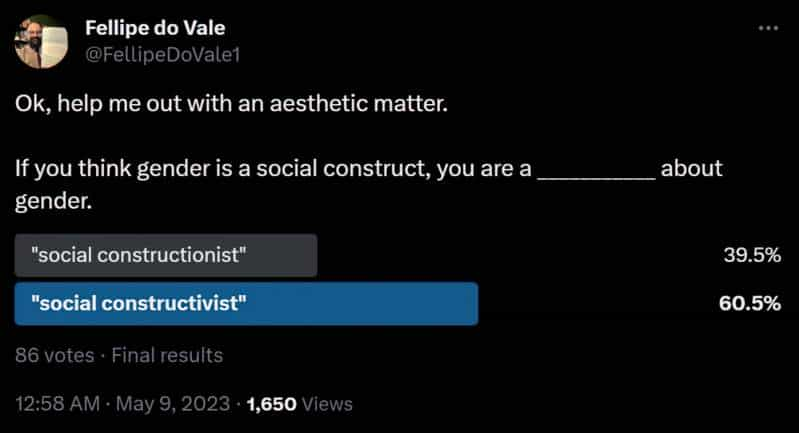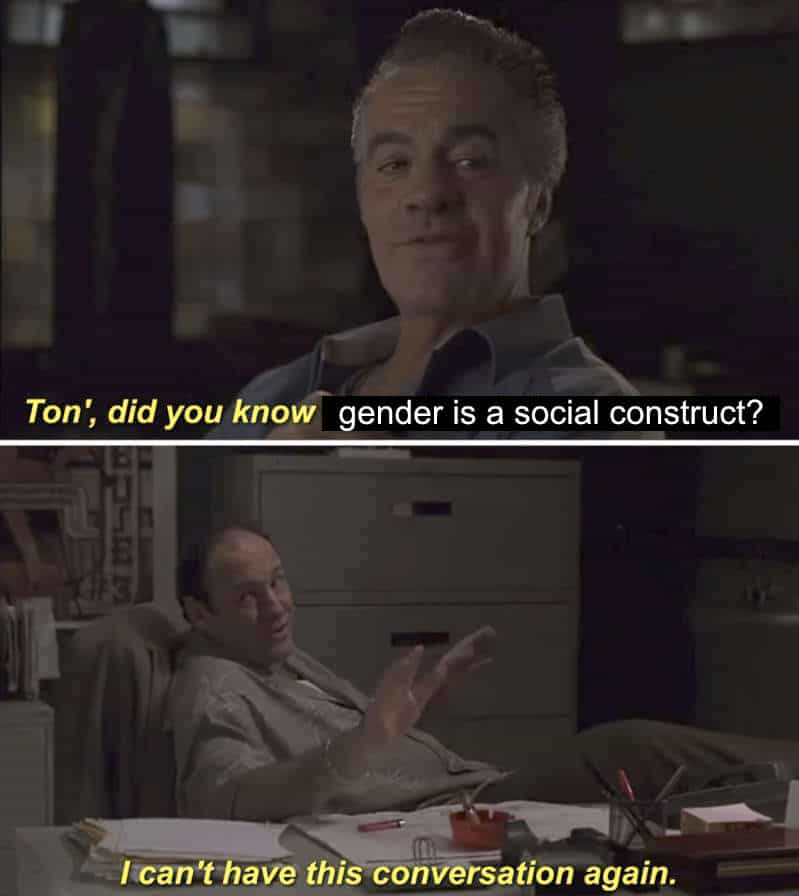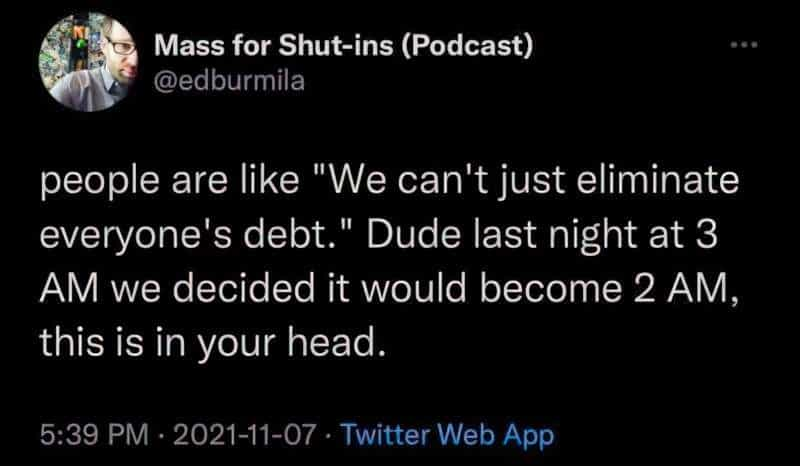A social construct is an aspect of our reality which is:
- not inherently determined by nature
- created and shaped by human societies
- context specific (but also has context continuity)
Norms, roles, institutions, and reality itself, are socially constructed through the collective beliefs, meanings, and interpretations of individuals within a particular culture or society.
The terms ‘social construct’ and ‘social construction’ are used interchangeably.
EXAMPLES OF SOCIAL CONSTRUCTIONS
- Money: The value of currency and the concept of money are social constructs. The worth assigned to pieces of paper or metal is not inherent but is agreed upon by a society.
- Nationality: The distinctions between different nations and the rights associated with citizenship are created by societies.
- Education: Societies determine what knowledge is valuable and how it should be assessed and recognized.
- Age: What is considered “appropriate” behaviour or responsibilities for a certain age is culturally defined.
- Beauty Standards: Cultural and societal notions of beauty vary across cultures and change over time.
- Social Class: The categorization of individuals or families into social classes based on factors such as wealth, occupation, and education is a social construct. Different societies may have distinct class structures.
- Language: The meanings assigned to words and the rules of grammar are agreed upon by communities of speakers.
- Marriage: Ideas around monogamy and the legal recognition of partnerships are social constructs that vary across cultures.
- Gender roles: Different societies define and enforce norms associated with femininity and masculinity.
- Fashion: Trends in clothing and appearance are influenced by culture and society.
- Mental illness: The line between mentally ill and mentally well is nowhere near as clear cut as the language around it would suggest.
- Neurodivergence: We divide people into neurotypical and neurodivergent.
Once we understand the taken-for-granted aspects of our lives as constructed, next we can question whether they’re worth hanging onto as the best way to run society.

Is there any difference between a social construct and a cultural construct?
The terms “social construct” and “cultural construct” are related and are sometimes used interchangeably, but they can have nuanced differences in their emphasis.
Social Construct
- Definition: Social constructs refer to aspects of reality that are created and maintained by societal beliefs, perceptions, and interactions.
- Focus: Primarily emphasizes the role of society and social interactions in shaping concepts, norms, and structures.
- Examples: Gender roles, social institutions, legal systems, the concept of race.
Cultural Construct
- Definition: Cultural constructs, on the other hand, specifically highlight the influence of culture on the creation and interpretation of meanings and symbols.
- Focus: Puts emphasis on the shared beliefs, values, practices, and symbols within a culture.
- Examples: Language, rituals, customs, and traditions specific to a particular group.
Social constructs generally emphasize the broader societal influences on our understanding of reality. Cultural constructs narrow the focus to the role of culture in shaping these constructs.
Both terms recognise the importance of human perception, shared meanings, and social interactions in creating and maintaining elements of our collective reality. The distinction between the two terms is not rigid. Usage can depend on context.
SOCIAL ‘CONSTRUCTIONIST’ OR SOCIAL ‘CONSTRUCTIVIST’?
In the USA, at least, it appears ‘social constructivist’ is slightly favoured.

GENDER AS EXAMPLE OF SOCIAL CONSTRUCT
Is gender really a social construct?
In general, I’m against binary thinking. Very few things in this world are true binaries. Yes, that includes gender itself. But it also includes ways people tend to think about gender. Most people fall into two main camps:
- Gender essentialists: Gender is entirely derivable from someone’s biological makeup. (Genes, gonads, hormones, appearance of external genitalia, physical ability.) Steven Pinker is a gender essentialist and comes to his view from the field of evolutionary psychology. Women need to be protected by men when pregnant and so on. Then there’s James Dobson, who writes Christian parenting books: “a father should be the manly role model for the son, to prevent the son from being homosexual” etc. Dobson may seem quite different from Pinker but comes to the same conclusion. For him it’s about testosterone which apparently fuels male interests like war and martial arts.
- Social constructionists: Babies are not born with a gender. Society creates gender in a person. Gender and sex are conceptually separate but not distinct. They overlap and one influences the other.
As you’ve probably noticed yourself, gender essentialists tend to congregate in conservative places e.g. in the Roman Catholic church. Essentialists argue that whatever women do comes ‘naturally’. This allows women to be underpaid or not paid for performing tasks such as childcare and housework, for instance.
Social constructionists tend to accumulate in the gender studies departments of universities.

Not all feminists are fully on board the social constructionist train, not least because this view doesn’t lead directly to social change.
The time has come for me to leave these categories behind. They have done a useful job, but they have their limitations. They are adequate for a rough sketch but far too vague and nebulous if we are trying to copy a masterpiece.
Elaine Storkey, Created Or Constructed?: The Great Gender Debate, back in 2001, English philosopher and Christian feminist
Some people feel no sense of gender whatsoever. Such individuals concentrate in the aroace and autistic communities. Little research has gone into this so far, but the existence of agender people and the prevalence of agender people in other specific demographics does point to at least a little biological influence, even if we have no idea what that is yet.
This is about sexual orientation rather than gender identity, but research shows that gay, lesbian, bi+ and asexual people are less likely than heterosexual people to be right-handed. It’s difficult to argue that left-handedness and ambidexterity are social constructions. Since gender identity and sexual orientation are distinct but not entirely unrelated (especially in the aroace community), we might also expect gender identity to be at least a little ‘born this way’.

Note that there are different kinds of gender essentialism. I’m not talking about the kind which argues for biological determinism.
THE IMPORTANCE OF CONTEXT TO SOCIAL CONSTRUCTS
Let’s take money as an example of cultural construct.

The tweet below demonstrates how both time and money are cultural constructs.

If you try to spend your $20 Australian in New Zealand, you won’t get very far. You need to use the currency of the region. The example of currency illuminates how social constructs are context dependent.
Likewise, if you go to New Zealand but you’re still running on Australian time, you’ll be at least two hours late for everything. Another example about context, but with the social construct of time.
Now, if you continue this line of thinking, you get to: “There are as many genders as there are contexts. There are as many genders as there are gendered people.”
Context doesn’t just change when you get on a plane and go to a different country, but changes as soon as a different person walks into the room. Some contemporary theorists use this view of social construction.
However, it becomes very difficult to say anything meaningful when you’re unable to generalise in the slightest. Meaningful discussions about cultural constructions require some degree of contextual continuity.
JUST BECAUSE THEY’RE CONSTRUCTS DOESN’T MEAN THEY’RE EASILY OR QUICKLY CHANGED
Social and cultural constructions work a bit like biological organisms: They evolve and morph over time. Culture goes through times of rapid evolution, in which case we can see things changing within a single lifetime. Presently, we’re experiencing a gender revolution, and so the cultural construction of gender seems to be changing before our eyes (hence the backlash).
Some people have a bit of trouble with transgender not because they’re out and out terfs, but because they’re a little uneasy with what they see as the medicalisation of gender.
Terfs also tend to worry that the existence of transgender takes something away from the category of woman. They worry that if the lines around ‘woman’ as a category become blurred, society will no longer protect women’s rights. This is based on the notion that trans women are not women, and is immediately 100% resolved once trans women are accepted as just another form of womanhood, just as white womanhood or disabled womanhood is its own distinct form of womanhood.

I’ve seen cisgender people get a bit stuck when trying to understand why a trans woman would undergo invasive and sometimes quite dangerous gender affirming healthcare when binary trans people seem to reinforce the gender rules rather than expand them. These people will say things like, “What’s with the medicalisation of gender? Why don’t we instead open up society’s notions of what it means to be a man? If men were allowed to wear dresses and so on, there would be no need for gender non-conforming men to transition.”

Likewise, “If misogyny didn’t exist — if all genders were considered equal — there would be no need for trans men and we wouldn’t see so many adolescent girls transitioning at such alarming rates*.”
*they’re not girls and the rate is not alarming
So go the arguments. The natural next step in that line of thinking: “Surely we should be ploughing our efforts into fixing inequality and expanding the gender rules for everyone.” On the surface, this sounds feminist. That’s why I leave the ‘f’ on ‘terf’ (though refuse to capitalise).

Leaving aside all of the other arguments about whether gender really is 100% socially constructed, and the many erroneous assumptions about why trans people transition, one important factor often goes missing in this thought process:
Just because something is a social construction, doesn’t mean it is easily changed.
Social constructions are mammoth sized, oftentimes worldwide, and take generations to change. Progress isn’t always linear. Rights and freedoms can erode.
You might not like the concept of money. We should all get our basic needs met by the government and do everything by local barter system. You may think that, and believe it with your whole heart, but good luck implementing that in your own community. Likewise, you may find gender a rubbish concept, but good luck changing it in your lifetime.
Once the slow-changing nature of social construction is understood, it is far more clear why a transgender individual would transition rather than wait around hoping for The Culture to dispense with gender rules within a single lifetime*.
*Many (if not most) transgender people do not want to get rid of gender. That’s not a widespread aspiration.
That said, the existence of transgender individuals — and especially gender detached and non-binary individuals — is vital to the task of expanding everybody’s notions around gender, by illuminating the gender rules and asking everyone to consider why gender rules exist in the first place.

Long story short: Gender rules exist to keep certain cisgender men at the top of the social hierarchy. Once gender rules come into question, every social construction comes into question, and some people find this hugely destabilising.
The trans community taught us that it is possible to effectively challenge that which is considered the very foundation of our sense of normalcy. So if it is possible to challenge the gender binary, then we can certainly, effectively, resist prisons, and jails, and police.
Angela Davis, 2020

